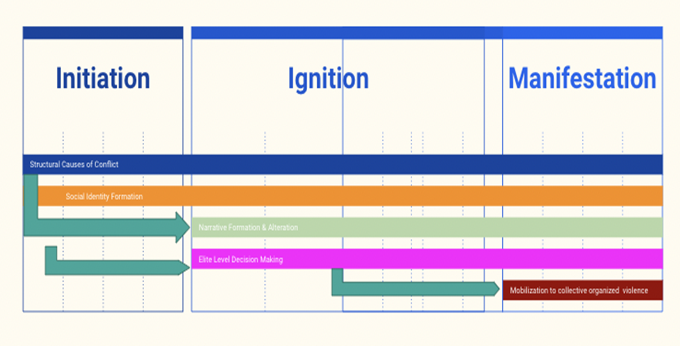

Prof. Udi Sommer, Department of Political Science
Conflicts as Processes: An Attempt at an Interdisciplinary Modern Conflict Typology
The field of conflict resolution is unique due to its interdisciplinary properties and the ability to synthesize theories that belong to a vast array of fields of knowledge. Many scholars have worked on analyzing different disputes to create models of their escalation, with the goal of understanding which factors result in collective violence. Despite this, there has yet to be an agreement in the field as to what exactly is the process behind escalations. Existing models are either single or dual-disciplinary, while due to the field’s interdisciplinarity, conflicts are affected by an extensive amount of both internal and exogenous factors. This is a crucial gap in research, as without this, it is not possible to classify conflicts according to their type, which could help develop better strategies for more efficient resolution processes, mitigation efforts, and confidence-building measures. The attempt to fill this gap through Petr’s doctoral dissertation is best explained in two distinct phases. Firstly, a new model of escalation was proposed by reviewing existing ones. Having a multi-level, interdisciplinary, and chronological model of escalations, the theoretical basis provided is an attempt to review all angles that most conflicts tend to have while being able to see which ones happen when in each one, as well as what are the effects of each corresponding factor within the model. Following that, in the second stage, a conflict typology will be created by looking at the model’s variations between case studies. This typology will have a scope of looking at conflicts that are of the violent, intergroup type. Theoretical works on conflict escalations are very context-specific to the conflicts that scholars analyze. Because of this – a significant limitation of all the existing models that were reviewed in this section is that they are single, or best-case dual disciplinary, omitting many significant factors that influence the flow of the conflict. Through a process of developing a theoretical framework, five key elements were identified: Structural Causes & Institutions, Social Identities & Groups, Narratives, Elite Level Decision-making, and Mobilization towards organized collective violence. Petr proposes three distinct stages: initiation, ignition, and manifestation. The first stage is when the conflict is invisible. However, the oil for it is already put in place, and the gears are starting to shift. At this stage, structural causes of conflict and social identities are formed, impacting the communities through unmet needs and establishing the in and out-groups. Furthermore, the conflict moves in the ignition stage, where it finally becomes visible to the naked eye, through establishing and altering the narrative, according to the social identity parameters, while elites are starting to make decisions that can serve as early indicators of conflict. At the last stage of manifestation – the society becomes mobilized to carry out acts of collective organized violence towards the out-group, so the conflict takes full effect and is no longer visible but rather blinding. The process occurs on both sides of the conflict; thus, to grasp the complete picture, two models need to be filled with inputs from each group and juxtaposed against one another. In order to fill in the gaps of knowledge as per the current literature on typologies, the model will be used to address typology conflicts. For this purpose, the following research question was adopted for this purpose: How does the violent intergroup conflict group according to the process model?
